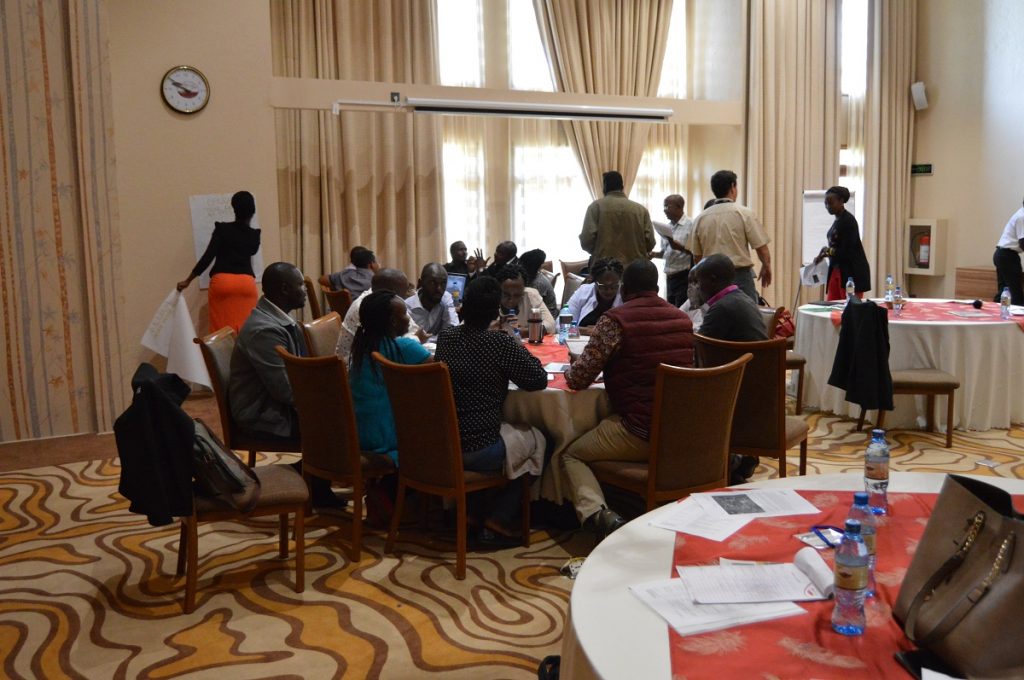Advanced chemical, oil and gas spill management
Between 23 and 26 April, 2019 I participated in an advanced course on chemical and oil spill management. I learnt numerous lessons which I am going to share with you in this article in a moment.

The training was organized by Ministry of Petroleum and Mining Kenya Petroleum Technical Assistance Project aka KEPTAP.
As it is the norm in the oil industry, safety is put at the fore front. Just before embarking on the agenda of the first day, we were informed about our safety options and what we would do in case of an emergency. This made me feel like I had just arrived at an oil field in Lokichar, Turkana County.
Read More: From Acquisition to decommissioning
The facilitator pointed out to us that chemical and oil spills are inevitable. This happens despite the fact that industry actors dedicate a lot of effort, resources and time in designing oil and gas operations in a water tight way to avoid spills. That notwithstanding still chemical and oil spills happen on land and on sea or lake waters. This happens every year all over the world.
When chemicals and oil spill, they cause a lot of socio-economic as well as ecological damage. The chemicals and crude oil has toxic effect on the local community and on the workers.
Causes of chemical and oil spills
Chemical and oil spills are caused by two main reasons. The first one is catastrophic accidents while the second one of mismanagement of operations.
The Piper Alpha was an offshore platform explosion, Exxon Valdez and Texas City Refinery are examples of accidents while Macondo Well is a perfect example of mismanaged operational response.
An emergency has many characteristics which include fear, surprise, rapid flow of events, third party involvement, intense scrutiny and panic among others.
Outcomes of chemical or oil spills
Chemical and oil spills have consequences. First consequence is economic loss. For example, Piper Alpha led to a loss of USD$1 billion and shares plummeted at the stock exchange and the government introduced new regulations.
In the case of Exxon Valdez, a total of $5 billion was lost as a result of an oil spill. The boss of the oil company was sacked, shares went down by 40% and new regulations were introduced.
Macondo Spill
During the Macondo incident, the regulator was caught flat footed because its inspectors lacked proper training. The Mineral Management Service (MMS) was the regulator at that time. The regulator was mandated to collect revenue from oil and gas drilling for the state as well as grant permits. This was a serious conflict of interest. The MMS as a regulator was abolished and in its place a new agency was established.
Emergency response should aim at protecting the affected people, protecting the environment, use the emergency to demonstrate how the organization is committed or expertise in handling emergencies and above all be on top of things by controlling the flow of information.
Work closely with the media by providing them with the information that they need. Do not leave them in a black. Doing so will lead them to other sources for information.
In order to have successful emergency response, you must ensure that there is proper co-ordination, organized effort, have knowledge and display management and leadership efficiency.
Application of Dispersants
Dispersants are used as part of chemical or oil spills to minimize the socio-economic and ecological damage. The dispersants also prevent the released oil from drifting into coastal habitats. Application of dispersants on floating oil has an impact of breaking the oil into small oil droplets which are dispersed and finally become biodegradable.
In 2010, dispersants were successfully used during the emergency management of Macondo oil spill off the Gulf of Mexico.
Socio-economic impact
Oil and gas spill has a lot of impact on people’s socio-economic activities. For instance, oil on the surface can destroy fishing boats as well as equipment. Fishing in oiled water may be prohibited by the state. If oil spreads to the beaches, it may lead to closure of those beaches and hence have an implication on hospitality industry. Tourism will be affected when oil spill drifts to tourist beaches.
Floating
When oil and gas companies are dealing with floating oil, there are three main ways of dealing with it. First is called at-sea containment and recovery. Here booms and skimmers are used to recover oil, collect it in vessel tanks or any other floating storage tanks. Secondly is controlling the oil through in-situ burning. Once oil is burnt, it turns into water vapor and carbon dioxide which disappears into the atmosphere. Finally, is dispersant use which we have already addressed.
Read More:Stages in Oil and Gas production process

